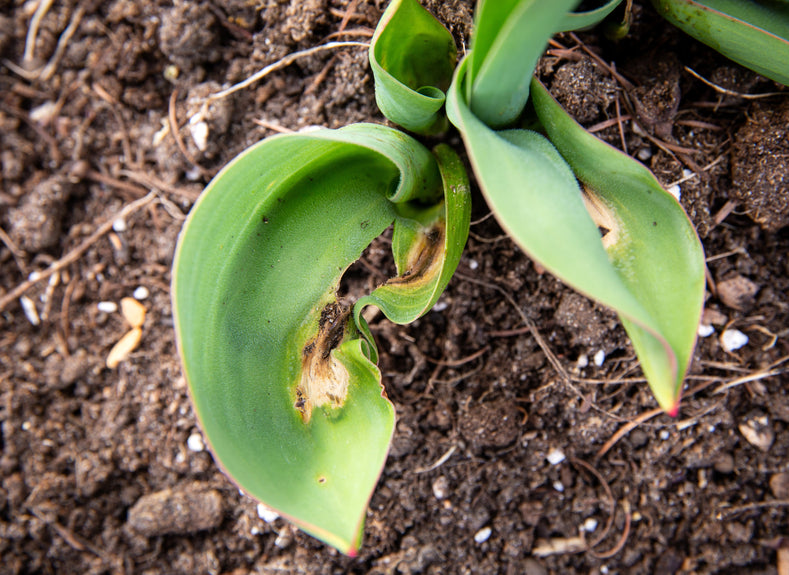When faced with the issue of a Tulip Fire caused by the Botrytis tulipae fungus, some may jokingly suggest calling the fire brigade. However, this is a serious problem that can affect everyone's tulips. Here are some tips to help prevent and treat this fungus in your garden.
Botrytis tulipae is a fungus that can attach itself to almost anything under ideal circumstances. This fungus can cause dark patches on tulip flowers, and it thrives in moist environments with high humidity levels and warm temperatures. When tulip leftovers are left behind in the soil, the fungus can survive thanks to the sclerotinia it produces. When new tulips are planted in that same soil, the sclerotinia can still be present, infecting the new plants and causing fire spots on the tulip leaves and flowers.

If the weather is dry during the growing period, the fungus may not spread too much, and only a few tulips may be infected. However, if there is a lot of rain, the fungus can travel around, infecting many tulips and causing large, brown spots on both the leaves and flowers. The fungus can be so severe that tulips may need to be removed entirely within a week.

To prevent the spread of the fungus, it is best to remove infected tulips entirely and check for any other heavily infected tulips in the surrounding area. Any infected leaves on other plants should also be removed. However, if the humidity remains high, it can be challenging to contain the infection. Employing a pesticide can be the best solution to protect your flowers, but it depends on the regulations where you live. Contacting a local garden center or garden supply shop for advice can be helpful.

After removing infected tulips, it is essential to remove every bit of the flower from the soil and avoid planting tulips in that spot for at least two years. If symptoms of Botrytis are present, wait three years before planting tulips in that specific spot again.
In conclusion, preventing and treating Tulip Fire caused by the Botrytis tulipae fungus involves keeping a dry growing environment, removing infected plants and leaves, and employing pesticides if necessary. Proper care and attention can ensure healthy and beautiful tulips in your garden.

